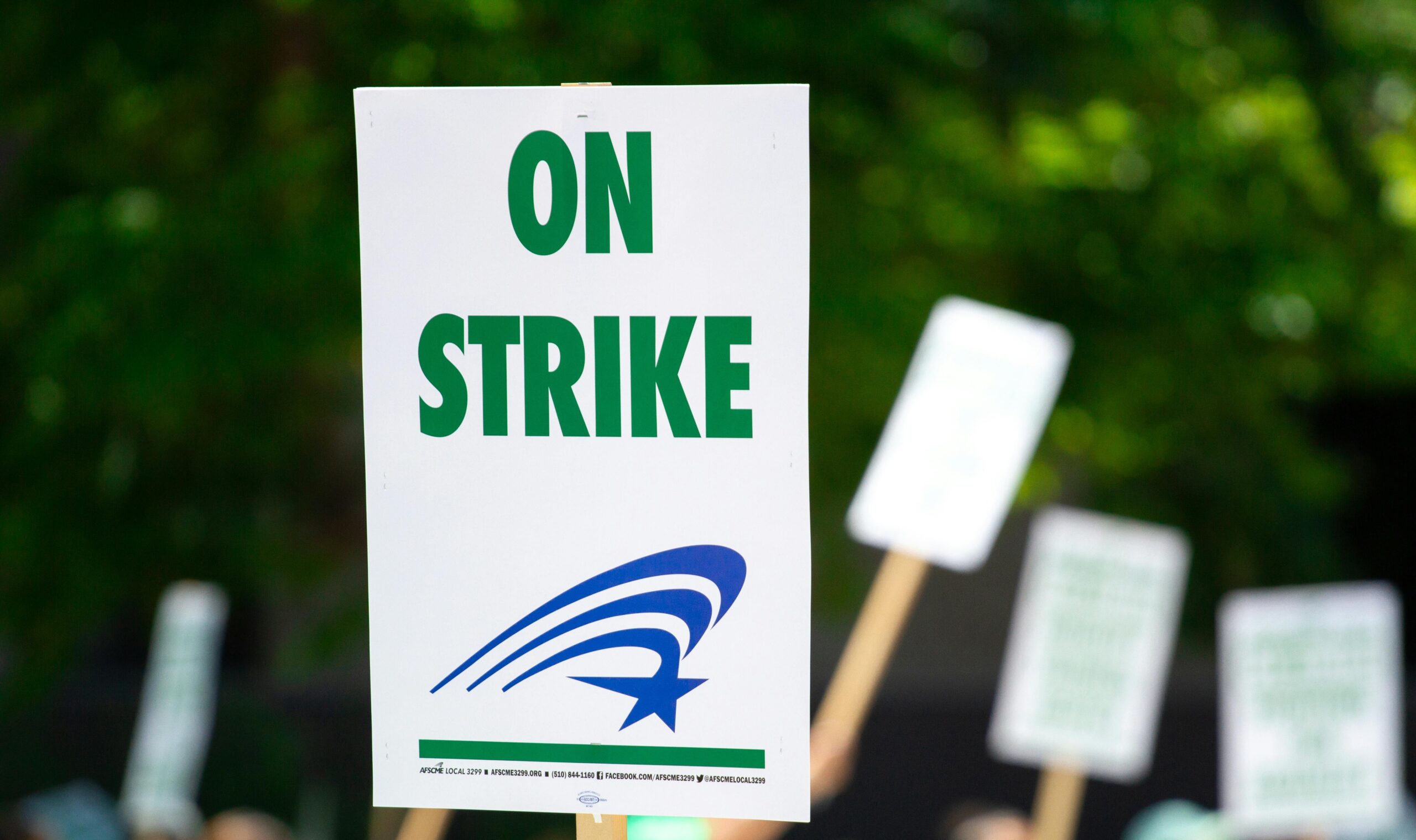A general strike is when people collectively stop all economic activity, refusing to work, shop, or produce, in protest.
While it might seem that nonviolent resistance like a general strike would be ineffective, research shows that the opposite is true.
Harvard political scientist, Erica Chenoweth, has found that major nonviolent campaigns have succeeded 53 percent of the time, whereas violent resistance campaigns were successful only 26 percent of the time.
Chenoweth’s research has found that in almost every instance, if 3.5% of the population nonviolently challenges the government, they succeed. (This held true for all but one case studied.)
3.5% of the US population is just 11 million people.
This administration is running roughshod over the constitution. As of the time of this writing, they have completed approximately 42% of project 2025, but that number has slowed.
They are unorganized, chaotic, and have seemingly no real plan other than hurting the already disenfranchised.
If we, the people, rise together organized and disciplined, we will win. Your first step, sign a strike card.
Learn more about the general strike here.
How You Can Take Action
First thing first, sign a strike card.
Anyone can sign, whether you’re unemployed, a student, retired, disabled, unhoused, or incarcerated. This is a people’s movement.
Jump to how to prepare for a strike.
Level 0.5 – Super easy
Get the word out: Tell your friends, share on social media. Share with everyone you can.
Follow mutual aid organizations – Bluesky
Level 0.5 – Super easy
Join the national Discord server to keep updated on general strike news.
Join your local chapter through the local discord server and follow them on Instagram or Bluesky.
Level 1 – Easy
Learn about what a general strike is, what it entails, and how it has worked before.
- General Strike’s youtube.
- Waging Nonviolence’s What would a general strike in the US actually look like?
- Summary of Erica Chenoweth’s research.
- Very short summary of Erica Chenoweth’s research (just the facts and figures).
- BBC’s The ‘3.5% rule’: How a small minority can change the world
- General Strike’s welcome slides.
- Long, in depth reading on mutual aid.
Level 2 – Medium
Go to local general strike chapter events, rallies, and other actions. Find events in the local discord server or on social media.
Level 2 – Medium
Conduct outreach with your local General Strike chapter.
Conduct outreach for the national General Strike organization.
Level 2 – Medium
Print and post flyers and give out business cards with information about the general strike and a QR code to their website.
You can also order stickers to put around town.
Here’s a variety of pdfs to print and pass out.
Can’t forget the zines.
Order General Strike wristbands.
Level 2 – Medium
Volunteer your skills using this form.
Needed skills range widely, from agriculture and livestock; to education, fitness and health; to communication, STEM, research and tech; to creative digital and tangible work; to writing, business management, marketing, and legal; to construction and more.
Volunteer your language skills.
Level 3 – Hard
If there is no general strike chapter in your area, consider starting one. Help prepare your community for a general strike.
Write to info@generalstrikeus.com for specific help and see the following resources.
- How to start a General Strike US chapter.
- Even more ideas on starting a chapter.
- Role of chapters.
- How to make a chapter linktree.
Level 3 – Hard
Table for General Strike US at community events and gatherings.
Level 3 – Hard
Prepare for strike.
Individually
- Build relationships with your neighbors – it’s important to build trust.
- Attend community meetings
- Host community meals and potlucks
- Share resources like books, articles, and zines. Share recommendations for other media like television, movies, and podcasts.
- Host reading groups or craft circles
- Develop practical skills like first aid, gardening, food preservation, or repair work.
- Learn about digital security and encryption to protect sensitive organizing efforts.
- Teach others these skills one-on-one or through teach-ins
- Join and supplement free stores and community fridges if you can.
- Be welcoming to new members.
Community
- Join or start mutual aid networks – these allow participants to save the money they would spend on essentials like food to put towards essentials like rent or utilities.
- Start a free store in your community.
- Start a timebank – Here’s a video. Here’s site.
- Recruit people with skills that they’d be willing to share. (Everyone has valuable skills to share.)
- Community gardens, cooperative housing projects, skill sharing workshops (page 5), libraries, and tool lending.
- Organize a community strike fund if you can.
- Childcare, transportation.
- Create alternative education spaces for teaching skills, history, and organizing tactics.
- Plan logistics for food distribution, healthcare, and other essential services during strike periods.
- Collaboratively create autonomous systems for meeting basic needs, such as community run clinics, food distribution networks, and independent energy cooperatives.
- Establish democratic councils or assemblies where community members can make collective decisions outside of state structures.
- Coordinate with other movements, unions, and organizations to scale up resistance efforts.
- Check out this list for community leaders on building resistance in your community.
See here for step-by-step instructions on a variety of community projects you can make.
See General Strike’s full list of ways of building resistance.
Extra
- Add a strike card sign up on your website. See the guidelines here.
What if I can’t afford to participate in a general strike?
- You are not alone. Millions of people in this country are living paycheck to paycheck, working multiple jobs, or caring for others with little to no support. The fear of losing income, housing, healthcare, or food is real. A general strike is not about pressuring those who are already struggling, it’s about building collective power so that none of us have to live on the edge.
- Here’s what you can do even if you can’t afford to stop working:
- Sign a strike card anyway. It shows solidarity, even if you’re not in a place to walk out.
- Support the strike in other ways. Spread the word. Attend events on your off-hours. Share flyers. Volunteer skills remotely.
- Build mutual aid networks. These are designed exactly for this situation—to support people during strike periods, especially those with no safety net.
- Advocate at your workplace. You might not be able to strike, but you can help others prepare, distribute resources, or help organize for future actions.
- Remember: striking isn’t just for those who can afford to. It’s a movement that includes those who can’t—because they’re often the ones hit hardest by injustice. By standing together in whatever way we can, we increase the pressure and build systems of care to help each other survive.
- This movement doesn’t leave anyone behind.
Photo credit: https://www.pexels.com/@mediocrememories/


Leave a Reply